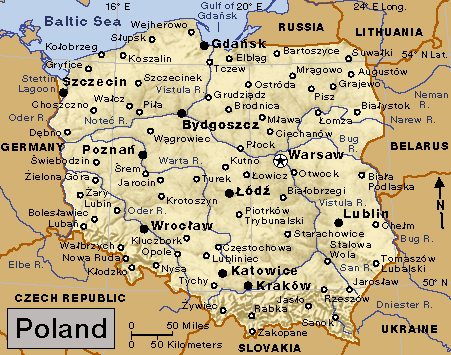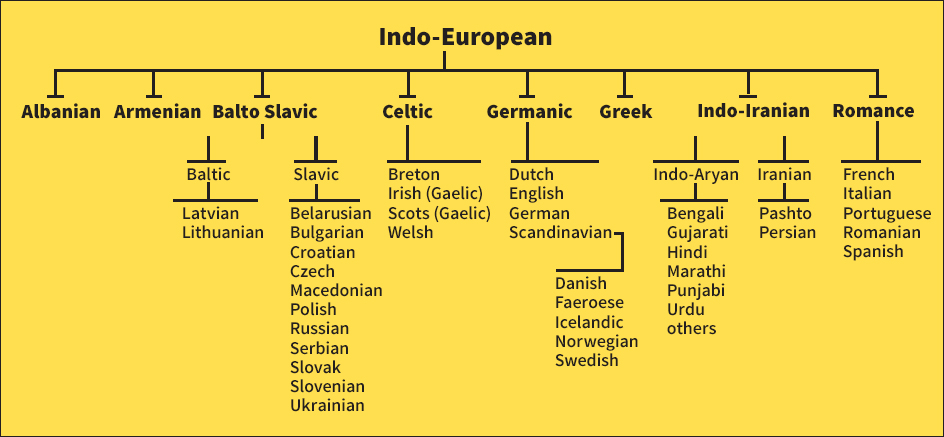Polish is the official language of the central European country of Poland. It is also one of 24 official and working languages of the European Union (EU). Some 40 to 50 million people speak Polish. Most of them live in Poland, but large communities of Polish speakers also live in nearby European countries as well as in Australia and in North and South America.
Polish belongs to the Indo-European language family—that is, a group of languages descended from a common parent language. Within the Indo-European family, Polish is further categorized as a Slavic language. It is a close relative of the Czech and Slovak languages, as well as the Sorbian language spoken by the Wend people of eastern Germany. Belarusian, Bulgarian, Croatian, Macedonian, Russian, Serbian, Slovenian, and Ukrainian are also Slavic languages.

Unlike other Slavic languages written in the Cyrillic script, Polish is written using a modified Latin, or Roman, alphabet. This fact reflects the dominance of the Roman Catholic faith in the region since the A.D. 900’s, around the time the language began to take shape. The Polish alphabet has 32 letters, which includes all the letters of the English alphabet, plus some unique characters. For example, Polish uses the letter l, which is pronounced like an English w. Polish also uses many clusters of consonants, and diacritical marks—that is, signs used with letters to indicate pronunciation or meaning.

Polish is considered a difficult language to learn. It has a complicated grammar, including a complex system of gender. There are no articles, such as a or the in English. Polish has seven cases, a feature of nouns and pronouns that helps show their relation to other parts of speech in a sentence. In comparison, English has only two cases: common and possessive.
Besides the homogenized (uniform) Polish that is Poland’s official language, there are a number of Polish dialects with roots in the region’s tribal days, before a unified Polish state existed. These include the Great/Greater Polish, Little/Lesser Polish, Mazovian, Silesian, and Kashubian dialects.
In the 1500's, the poets Mikolaj Rej and Jan Kochanowski were among the first writers to use the Polish language for their works. Outstanding Polish writers of the 1800's included the poet Adam Mickiewicz, the playwright Stanislaw Wyspianski, and the novelist Henryk Sienkiewicz. Several Polish writers have won the Nobel Prize for literature: Sienkiewicz, who won the prize in 1905; the novelist Wladyslaw Reymont (1924); author Isaac Bashevis Singer (1978); and the poets Czeslaw Milosz (1980) and Wislawa Szymborska (1996).
Image 1: The flag of Poland flies over nearly 40 million Polish speakers. Credit: © Loveshop/Shutterstock
Image 2: Poland Credit: WORLD BOOK map
Image 3: Polish belongs to the large Indo-European language family. Credit: WORLD BOOK diagram